English Lavender Growers Share Their Secrets – ‘The Most Important Factor Is Positioning’

HERBS > LAVENDER

Ed is a horticultural therapist, professional gardener and writer. Ed has a BSc in Occupational Therapy from Coventry University and a Diploma in Social and Therapeutic Horticulture (DipSTH) via Thive, the RHS and Pershore College. Ed runs a community kitchen garden in West Sussex, where he leads horticultural therapy sessions.
Reviewed By ROY NICOL

Roy is a Professional Gardener and Horticultural Consultant, specialising in large garden year-round maintenance and garden development. He is an RHS Master of Horticulture and uses his research in the application of no-dig methods in ornamental garden settings. Roy has been a Professional Gardener for more than six years and is a member of the Chartered Institute of Horticulture, Professional Gardener's Guild and Association of Professional Landscapers (Professional Gardener).
Contributions From JULIA SNOWBALL

Julia is the Head Gardener at Yorkshire Lavender, a lavender farm based in West Yorkshire that is home to over 60 acres of land that is adorned by a huge array of lavender varieties and other herbs.

Owners of The Lavender Fields, the Butler family have been growing lavender commercially for nearly 25 years. Nick and Lyndsay are based in Hampshire and have invaluable experience in all aspects of lavender growing.

An Arable Farmer based in the Cotswold district. In 1999, Charlie began growing his own lavender and, more than 20 years later, is now the Owner of Cotswold Lavender, home to over 70 acres of lavender varieties.

Patrick is the MD of Fairweather’s Nursery, which is home to a Plant Heritage National Collection of Agapanthus. Their Allium cultivar won the HTA Plant Of The Year Award in 2021 and came 2nd in the same category at the Chelsea Flower Show in the same year. Patrick is also the Chair of the RHS Agapanthus AGM trials.

Isabelle Palmer, AKA 'The Balcony Gardener', is an award-winning garden designer who specialises in container growing and designing in small spaces. She has designed spaces for Anthropologie and appeared on numerous TV shows such as Love Your Garden. She has also published multiple books on balcony gardening, houseplants and succulents.
English Lavender is a true stalwart of gardens here in the United Kingdom – and for good reason.
With its wonderful fragrance, beautiful purple-blue flowers and ability to draw in pollinators galore, it is a great plant for any garden.
Given the right conditions and some simple care, it is easy to grow and will last for years.
“When I first started gardening, I loved lavender because it is an easy plant to grow in a window box and gives you a lot for your money,” shares Isabelle Palmer.
We teamed up with four British lavender growers to help complement our growing advice:
- Nick & Lyndsay Butler – Owners of The Lavender Fields.
- Patrick Fairweather – MD of Fairweather’s Nursery.
- Julia Snowball – Head Gardener at Yorkshire Lavender.
- Charlie Byrd – Owner of Cotswold Lavender.
“Lavender is such a beautiful plant that flowers for a long period, providing not only colour but also aroma and texture to a garden and the countryside,” says Nick.
Overview
| Botanical Name | Lavandula angustifolia |
| Common Name(s) | English Lavender / Common Lavender |
| Plant Type | Shrub |
| Native Area | Mediterranean Europe |
| Hardiness Rating | H5 |
| Foliage | Evergreen |
| Flowers | Purple or blue flowers |
| When To Plant | April – May |
| Harvesting Months | July – August |
| When To Prune | March – May or September – November |
Sunlight
Preferred
Full Sun
Exposure
Sheltered
Size
Height
0.1 – 0.5M
Spread
0.5 -1M
Bloom Time
Summer
Soil
Preferred
Chalk, loam, clay, sand
Moisture
Well-drained
pH
Any
English Lavender, or Lavandula angustifolia as it is botanically named, is part of the Lamiaceae family and not a herb as it is often thought of, but a shrub.1Lavandula angustifolia. (n.d.). Missouri Botanical Garden. Retrieved March 21, 2023, from https://www.missouribotanicalgarden.org/PlantFinder/PlantFinderDetails.aspx?taxonid=281393&isprofile=1&gen=Lavandula
“Lavender is a very special shrub with a long history of cultivation in this country,” says Julia.
“It’s a plant which benefits us all with its calming scent and culinary properties, and it is a fantastic plant for the environment as the bees love it!”
Rather confusingly, English lavender is not actually native to the UK but originates from the warmer Mediterranean.2Lavandula angustifolia (English lavender). (n.d.). Native Plant Trust: Go Botany. Retrieved March 21, 2023, from https://gobotany.nativeplanttrust.org/species/lavandula/angustifolia/
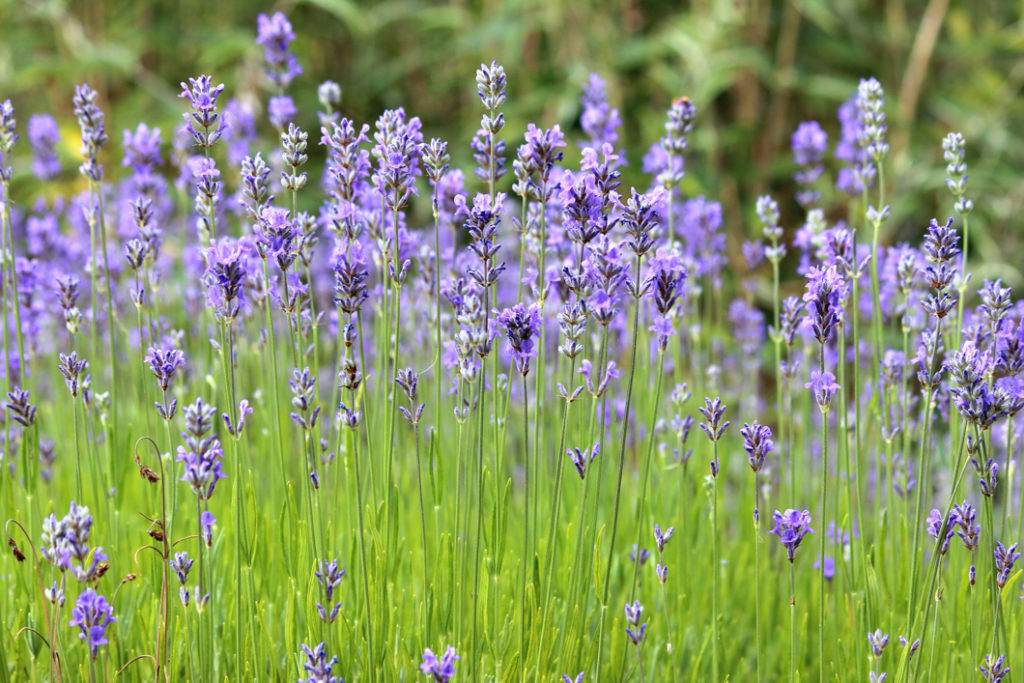
It does, however, cope rather well with our climate, especially in the south of the country.
“Our soil is very stony so it was important to find a crop that suited our soil type,” says Charlie, when discussing why he started growing lavender on his farm.
“Our farm is nearly 1,000 feet above sea level, which makes quite a difference to our climate. On average we are 2-3°C cooler than nearby towns because of the altitude.
“Lavender has really thrived here and has been an interesting crop to grow.”
A hardy and drought-tolerant shrub, it can tolerate temperatures down to -10to -15°C, unless grown in heavy soil prone to water-logging.
Varieties
The most well-known varieties of English lavender are L. angustifolia ‘Hidcote’ and L. angustifolia ‘Munsted’.
Both widely grown in the UK, they are hardier than the English hybrids such as L. × intermedia and their French and Spanish counterparts L. stoechas – thus a more reliable choice for growing here, especially in the north of the country.

Both ‘Munsted’ and ‘Hidcote’ are relatively compact varieties growing to an eventual height of roughly 50cm.
The main difference between the two is that the slightly larger ‘Hidcote’ produces a darker purple flower compared to ‘Munsted’, which is lighter in colour and less compact.
Other English lavender varieties are available and can include those which produce pink and even white flowers in summer.
Planting Lavender
Where To Plant
“The most important care factor is positioning,” say the Butlers.
“Lavender likes to be in full sun and will not thrive in the shade.”
English lavender grows well when planted directly into the ground or in a pot or container, and thrives in sunlight, so a south or west-facing spot is ideal.
Lavenders in general are rather fussy when it comes to the soil though.
“Wet feet kill lavender quicker than anything, so good drainage is essential,” explains Charlie.
“Soils here at the farm drain naturally, which is one of the reasons we chose to grow lavender. On clay soils, it is important to mix sand or grit into the soil to create an open soil structure.”
With this in mind, they require a free-draining mix that is not too acidic and will seriously struggle to make it through the year if planted in soil with poor drainage.
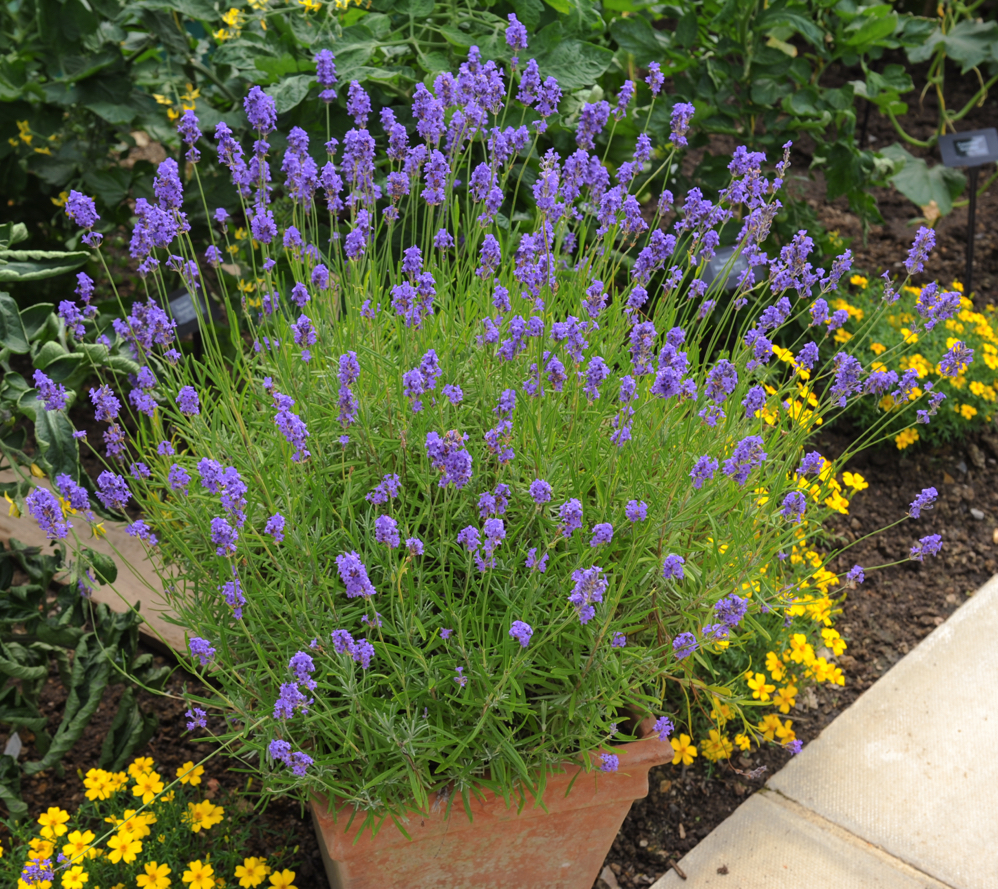
When preparing a site to plant English lavender, gravel or horticultural grit can be added to the bottom of the hole and potting mix to increase drainage levels, mimicking its Mediterranean origins as far as possible.
In really wet areas, planting on a small mound or ridge can prove beneficial as well.
How To Plant
English lavenders are readily available during the spring and are most commonly sold in 1-3L pot sizes, ready to plant out.
However, smaller lavender plug plants have become more widespread and are a cheaper way of buying larger quantities of plants, yet will need to be grown on first before planting out.
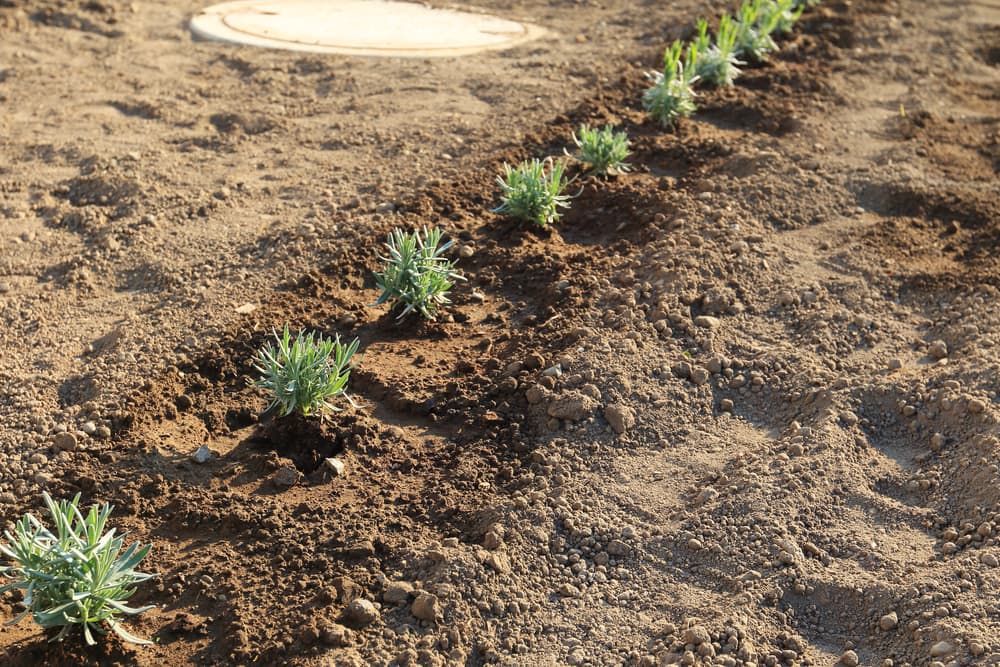
English lavender can grow up to 0.5m in height with a 1m spread, so need to be spaced accordingly when planting out.
English lavender can be a great plant for an informal low hedge in the garden.
If planting for a hedge, it is advisable to space the plants 30-45cm apart depending on the variety.
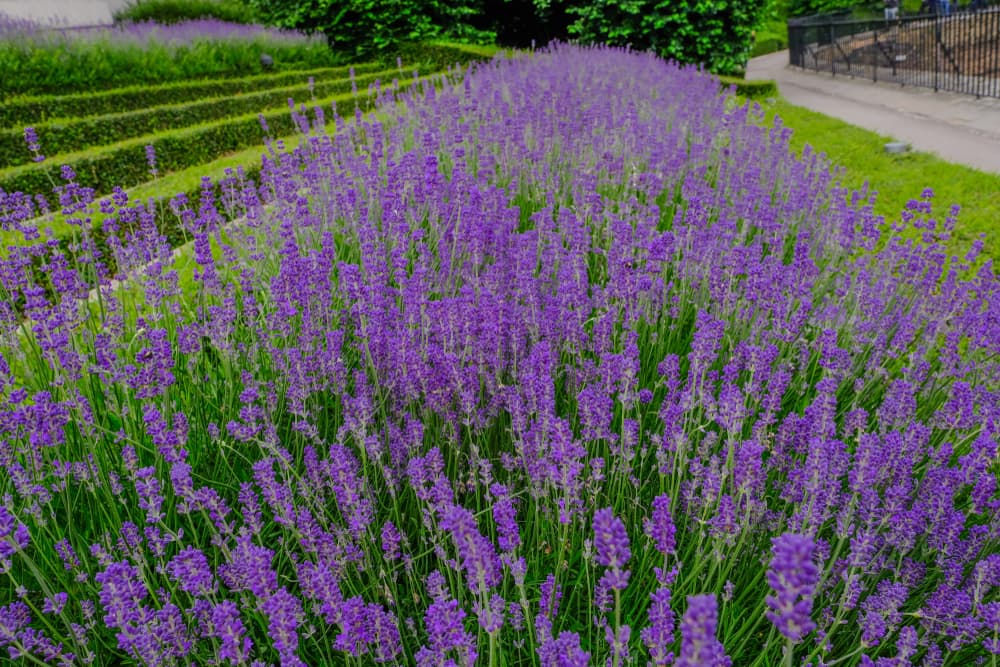
To give new plants the best chance of establishing, it is strongly recommended to plant them out in spring when the soil is warming up and they have the summer months to settle in and grow before the winter arrives.
When planting, plant at the same depth as they were previously in their pots.
“Once planted in the ground, lavender will need watering for the first few weeks,” explain the Butlers.
“Once the roots have taken, you should not need to water the plant, even during the dry season.”
English Lavender Care
If the aspect and soil conditions are right for lavender, then they need little ongoing care.
“Lavender is a Mediterranean plant, so try to give it conditions as close as possible to its natural home,” explains Julia.
“The plants prefer a sunny location with well-drained, poor, sandy soil and they do not like to be overwatered.”
Watering & Feeding
Once established, lavender will need little watering, unless when grown in a pot or container, which will dry out more quickly.
Lavender doesn’t tend to be a hungry plant as they like nutrient-poor soil, so feeding isn’t usually required, as Charlie shares:
“It’s important not to overfeed lavender.
“Don’t let them grow too big too quickly, as they will not be strong enough to support themselves when their foliage gets wet in the summer.”

Overwintering
Plants in containers or pots are more susceptible to hard frost due to their lack of insulation.
Therefore, it is advisable to provide a bit of protection to any containerised plants if severe weather is forecast.
Pots can either be brought in to overwinter under a porch or in an unheated greenhouse, which will not only provide some protection from low temperatures but the cold rains as well.
Pruning
English lavender tends to only need an annual prune, which can either be done in spring or autumn.
However, if pruned in the autumn, they can look a bit neater over the winter months.
“Pruning is ideally done at the end of the summer after the plant has finished flowering and before the cold weather sets in,” say the Butlers.
Once flowered, the flower stalks and about 3cm of green growth can be taken off.
“In early September as soon as flowering has finished, I use a sharp pair of shears or, in the case of extensive low hedging, a sharp hedge trimmer, to cut back the lavender as described,” shares Master Horticulturist Roy Nicol.
“The plant then has time over the autumn to grow fresh foliage which looks good and protects it over winter.”
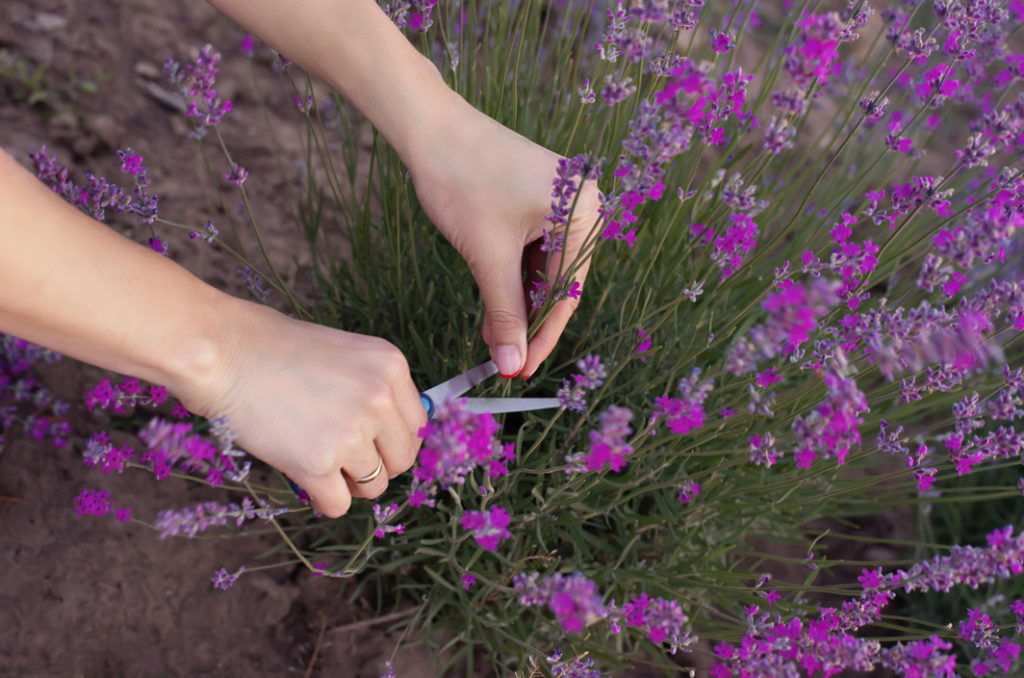
Lavenders do not easily regrow from old wood, so some green growth must be left on for the plants to regrow well.
Lavender plants tend to live for an average of 10-15 years, although some may live considerably longer.
Over time, the plants can become leggy, especially if not pruned correctly, but thankfully, lavender is easy to propagate from cuttings, so replacements are not difficult to provide.
Common Pests & Diseases
English lavender tends to be fairly problem-free if given the right conditions.
That being said, they can be rather susceptible to the rosemary beetle, which is unfortunately now widespread here in the UK.3Rosemary beetle. (n.d.). The Wildlife Trusts. Retrieved March 21, 2023, from https://www.wildlifetrusts.org/wildlife-explorer/invertebrates/beetles/rosemary-beetle
The rosemary beetle and their larvae feed on the foliage of rosemary plants, but also on thyme and lavender.
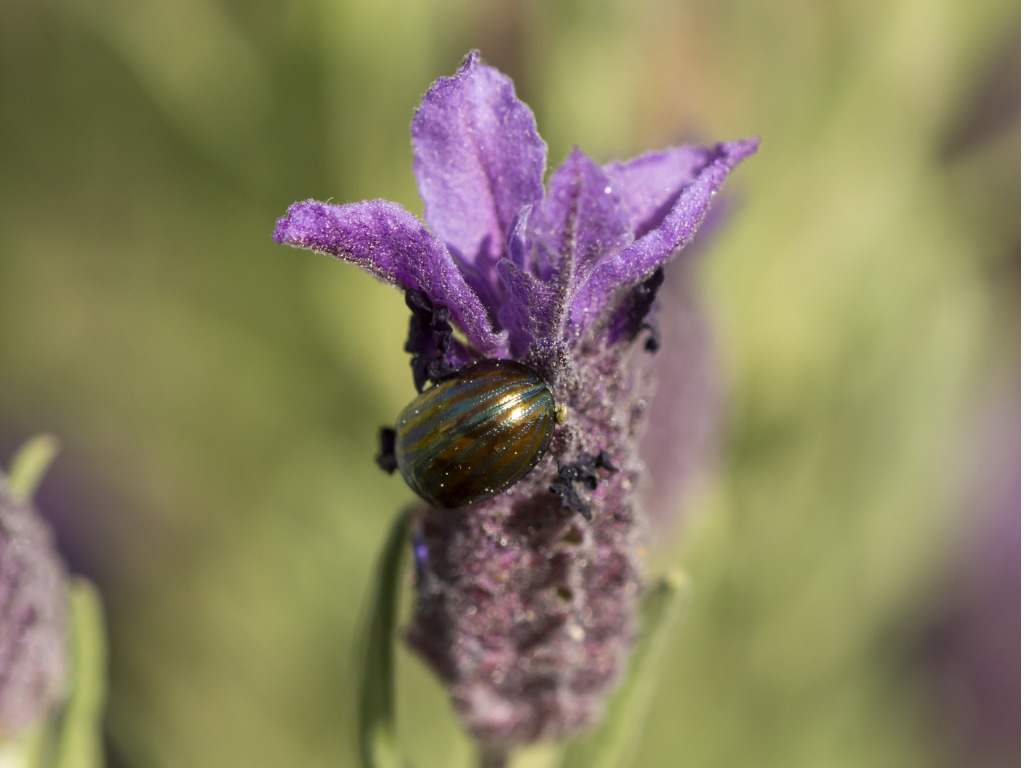
The shiny green and purple beetles are easy to spot on the leaves, which they can reduce in length to virtually nothing.
Yet the damage done is often small in comparison to the size of the plant and is of little aesthetic or health consequence.
For this reason, is it encouraged to tolerate small numbers and pick them off by hand if necessary.
However, pesticides are available if needs must, but can prove more effective when applied to the larvae rather than the adult beetles.
References
- 1Lavandula angustifolia. (n.d.). Missouri Botanical Garden. Retrieved March 21, 2023, from https://www.missouribotanicalgarden.org/PlantFinder/PlantFinderDetails.aspx?taxonid=281393&isprofile=1&gen=Lavandula
- 2Lavandula angustifolia (English lavender). (n.d.). Native Plant Trust: Go Botany. Retrieved March 21, 2023, from https://gobotany.nativeplanttrust.org/species/lavandula/angustifolia/
- 3Rosemary beetle. (n.d.). The Wildlife Trusts. Retrieved March 21, 2023, from https://www.wildlifetrusts.org/wildlife-explorer/invertebrates/beetles/rosemary-beetle
